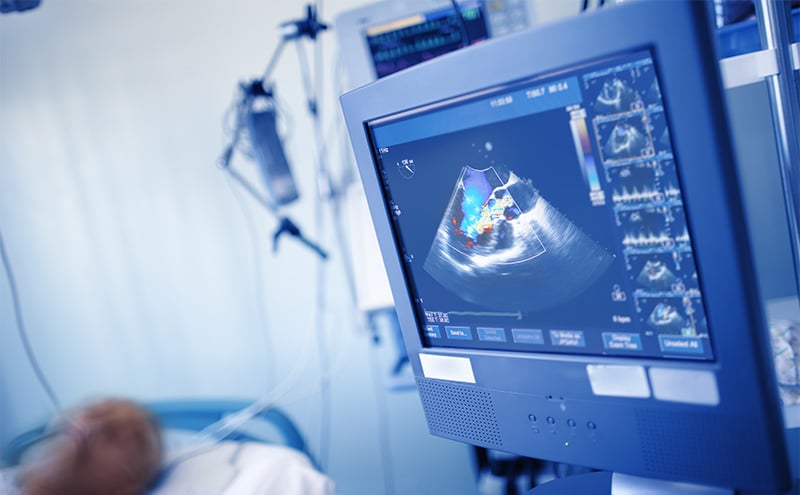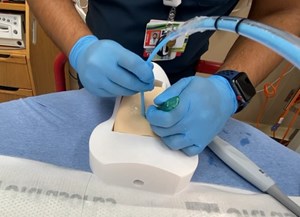
Coding for Echocardiography in the Emergency Department
Jason Arthur MD, MPH, Assistant Director for the Emergency Ultrasound and Pediatric Emergency Ultrasound Fellowship, University of Arkansas for Medical Sciences, Arkansas
Zachary Lewis, MD, FACEP, Co-Director of the Emergency Ultrasound and Pediatric Emergency Ultrasound Fellowship, University of Arkansas for Medical Sciences, Arkansas
Edited: Joshua Guttman MD, FRCPC, FACEP, Co-chair of Emergency Ultrasound Section’s Coding and Reimbursement Subcommittee, ACEP representative at the Emergency Ultrasound Fellowship Accreditation Council (EUFAC), Ultrasound Fellowship Director, Emory University, GA
Introduction
Echocardiography was one of the first applications of emergency ultrasound adopted by emergency physicians (EPs). Its use is both common and wide ranging with uses in trauma as part of the E-FAST, in shock states as part of the RUSH exam, and in patient presentations ranging from chest pain to dyspnea. As our experience with echocardiography has grown the applications and depth of evaluation has, and will likely continue, to expand.
Complete vs Limited Echocardiography Billing
Current procedure terminology (CPT) provides a numerical common language for providers to bill for services provided. A completed transthoracic echocardiogram (TTE), CPT 93306, requires real-time imaging and documentation of 2D and M-mode images of the bilateral atria and ventricles; spectral and color doppler over the aortic, mitral, tricuspid, pulmonic valves; and evaluation of the pericardium and adjacent portions of the aorta. A complete echocardiogram is typically not performed by emergency physicians as assessments to this extent rarely change ED management.
Most EPs instead bill for a limited TTE, CPT 93308, which requires only real-time imaging and documentation of 2D and/or M-mode but does not stipulate specific areas which must be imaged or required number of views. This allows the EP to focus on the clinical question and limiting acquisition of views which does not add to the patient’s emergency care. This is the code most used for point-of-care TTE in the ED and is the code billed for the cardiac portion of the FAST and E-FAST exams.
Coding for Advanced Applications of Emergency Echocardiography
EPs recognize the value of echocardiography and have begun adopting more advanced applications of echocardiography into practice. As this occurs, it is important that we ensure our reporting, coding, and billing practices match the work performed and risk assumed.
Color Doppler can be used in the ED for the assessment of valvular regurgitation. Color Doppler is coded by CPT 93325, which may be billed in addition to the limited echocardiogram (CPT 93308) if there is appropriate documentation of medical necessity and color Doppler findings. Similarly, use of spectral Doppler, including pulse-wave, continuous-wave, and tissue Doppler imaging, has its own unique CPT code. Applications of this include assessments of valvular stenosis, diastolic function, and quantification of right ventricular function. Spectral Doppler can be billed as CPT 93321 for limited spectral Doppler imaging. As an example, a patient with dyspnea in whom an EP performs a limited echocardiogram along with assessment for mitral regurgitation with color flow and left ventricular diastolic function with spectral Doppler, with a report including medical necessity, findings and interpretation with the images archived, the appropriate CPT codes for billing would be 93308, 93325, and 93321.
Coding for Transesophageal Echocardiography
Transesophageal Echocardiography (TEE) has been adopted in many EDs to provide critical diagnostic information in patients with hemodynamic instability as well as guide resuscitative efforts. This has been in large part due to the recognition of the difficulty of performing a TTE during cardiac arrest resuscitation and the advantage of continuous cardiac assessments during the resuscitation, uninhibited by chest compressions. ACEP has fully accepted resuscitative TEE and described the use of and training criteria for Emergency Physicians in Guidelines for the Use of Transesophageal Echocardiography (TEE) in the ED for Cardiac Arrest.1 While this represents an enormous leap forward in the EP’s diagnostic capability, it also involves significant clinical effort which should be represented in the documentation and billing for this procedure.
Unfortunately, CPT has yet to catch up to TEE in the ED. From the coding and billing perspective, a TEE should typically only be billed when TTE is inadequate to answer the clinical question. While this seems obvious to the EP during cardiac arrest, the medical necessity component of the report generally requires that a TTE be attempted, and if inadequate or non-diagnostic, only then should a TEE be performed and may be billed.2 In practice, this means that EPs should bill for both a limited TTE as well as a resuscitative TEE. Commonly a TTE is performed during cardiac arrest to assess for cardiac activity prior to TEE placement so the additional bill for a TTE should not be cumbersome. The EP should have adequate documentation of the necessity of TEE which would include the limitations of TTE during resuscitation of a patient with cardiac arrest or significant hemodynamic instability. There are cases where TEE may be performed as the initial test, including aortic dissection and high probability endocarditis, however these are usually not performed by the EP.2
There are multiple CPT codes pertaining to TEE. The recommended CPT code is 93312. This code includes probe placement, image acquisition, interpretation, and reporting. It does not specify whether the exam is complete or limited. There is no limited TEE CPT code like there is for TTE and there is relatively little to describe what specific imaging is required for each CPT code. The addition of a -52 modifier, signifying reduced or limited services, may be a reasonable strategy in conveying the limited nature of the study. However, reimbursement can be reduced with that modifier, so we recommend discussing with your hospital coding experts when implementing TEE in your ED.
There are several potential CPT codes which may be applicable to Emergency Medicine (EM). If one physician places the transducer and another obtains and interprets the images, then CPT 93313 may be used for placement, and CPT 93314 for image acquisition, interpretation, and reporting. This may be useful in cases where an EP places the transducer and provides appropriate documentation, but imaging is interpreted and reported by another physician e.g., a cardiologist. Further, the physician placing the transducer and the physician acquiring and interpreting the imaging would typically need to be from separate billing groups or specialties (e.g., EM and Cardiology, or Anesthesia and Cardiology) to separately bill these codes. Additionally, use of TEE for hemodynamic monitoring may be billed as CPT 93318; this is relevant for those leaving TEE in place and periodically reimaging the patient. Use of this code would require documentation of the medical necessity for reacquiring images.
Bringing this all together, a not infrequent clinical scenario would be where a patient presents in cardiac arrest, a limited TTE (93308) is performed during the arrest, a resuscitative TEE (93312) placed and used to guide CPR. Following return of spontaneous circulation, the TEE is left in place to guide hemodynamic support (93318) for titration of vasopressors. Provided adequate documentation and description of medical necessity is reported, these may be reasonable codes to bill and reflect the procedures performed.
Importance to Emergency Medicine Practice
EPs have risen to the call to care for the sickest members of our society. Many of us reflexively downplay the importance of our work. However, our willingness to evolve, including adopting new and broader applications of ultrasound, is bred out of a desire to provide the highest quality care for our patients.
An unfortunate reality of the practice of medicine in the United States is that the value of our work often depends not on the lives saved, but on sterile measurements such as Relative Value Units, patients per hour, and reimbursement. As a specialty, we have embraced technology for the benefit of our patients, but we have an obligation to accurately account for our work to ensure our ability to provide adequate care in the future is appropriately funded. If you or your group perform advanced applications of echocardiography, consider developing a relationship with your local coding, billing, and compliance personnel and reviewing your Medicare Local Coverage Determinations (the source for much of the information in this article) to ensure your work is accurately reported and that you continue to be appropriately compensated.
References
- Guidelines for the Use of Transesophageal Echocardiography (TEE) in the ED for Cardiac Arrest. Ann Emerg Med. 2017 Sep;70(3):442-445.
- Transesophageal echocardiography (TEE). CMS.gov Centers for Medicare & Medicaid Services. (n.d.). Retrieved November 19, 2021, from https://www.cms.gov/medicare-coverage-database/view/lcd.aspx?LCDId=35016.
- American Medical Association. (2020). Current Procedural Terminology 2021.
- Sonosite. (n.d.). Retrieved December 6, 2021, from https://www.sonosite.com/sites/default/files/2021_Sonosite_TEE_01182021.pdf
- (n.d.). Retrieved December 6, 2021, from https://www.sonosite.com/sites/default/files/tee.pdf



